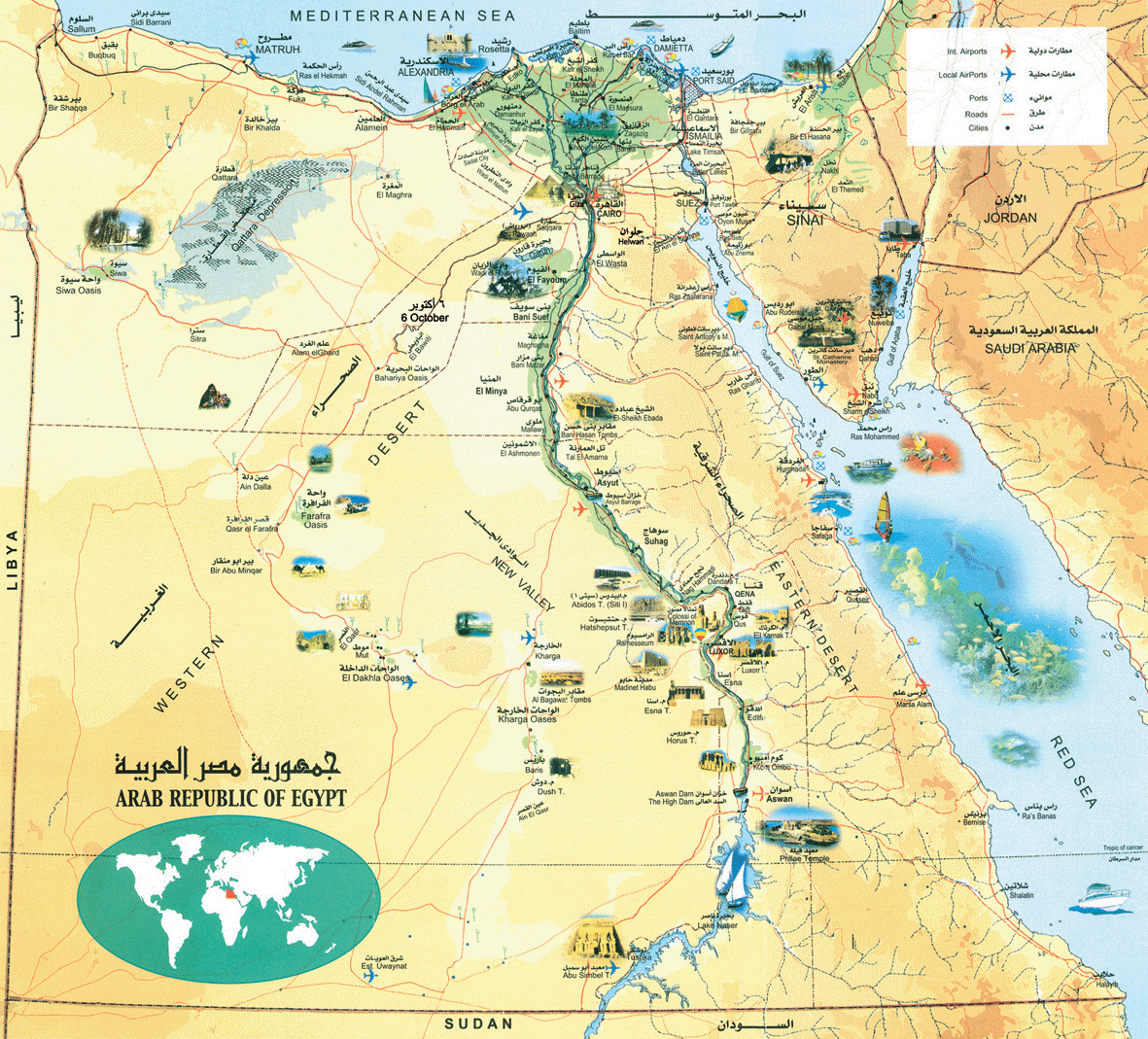
Army Deployment and Egypt’s National Security
Army Deployment and Egypt’s National Security
The army’s units and military formations within the borders of any country are usually deployed over all its strategic directions in order to protect the state from any potential threat. But, when there is a particular threat coming from one particular direction, such as hostility with a neighbouring country, the Army, in this case, deploys its forces massively in that direction, in order to preserve the national security of the state.
First: Field Armies
The Egyptian Army consists of two field armies and four military zones. The army has four main branches: Ground Forces, Air Forces, Naval Forces, and Air Defense Forces.

The number of Army’s main forces is estimated at 454.3 thousand officers and soldiers, in addition to 875 thousand as reserve forces.
The army forces are depolyed as follows:
1- Second Field Army
The headquarters of the Second Field Army Command is in Ismailia Governorate, located in the north-east direction of the Egyptian state. The Second Field Army’s mission is to secure the northern part of the Suez Canal area, Ismailia Governorate, and Port Said Governorate.
2- Third Field Army
The headquarters of the Third Field Army Command is in Suez Governorate, located in the eastern strategic direction of the Egyptian State. The third army’s mission is to secure the internal installations in the area from Kilo 61 on Cairo-Suez desert road to the international border line, about 260 km long, in addition to 400 km in the area from Ras Mohammed and Al-Auja on the border with Israel, and Southern Sinai and Red Sea governorates.
Second: Military Zones
1- Central Military Zone
The scope of work of the Central Military Zone’s forces and formations is in the governorates of Cairo, Giza and Qalioubia, extending to the governorates of Al Gharbia, Sharqia, Fayoum and Beni Suef. The Central Military Zone has several main headquarters in several areas.
2- Northern Military Zone
The scope of operation of the Northern Military Zone’s forces is in the governorates of Alexandria, Damanhour, Beheira, Damietta, as well as the zone’s main headquarters.
3- Western Military Zone
The Western Region is located in the governorate of Marsa Matruh and extends to the Red Sea area and the main headquarters of the Western Military Zone.
4- Southern Military Zone
The scope of operation of the Southern Military Zone is in Assiut and the governorates of Luxor, Aswan, Sohag, Qena, Aswan, the Red Sea and Menia.
Third: Special Units
The Egyptian Army includes several special forces from several branches, such as: the Thunderbolt units, the Parachute units, the Intelligence and Reconnaissance, the Navy Thunderbolt, the Navy’s Brigade of Special Units and Human Frogs, and the Rapid Deployment Forces.
Fourth: Air bases and military airports
The Egyptian army has a number of 35 air bases and military airports that are distributed over all four strategic directions within the Egyptian state.

The Egyptian air bases and military airports include: Abu Suweir Air Base, El Mansoura Air Base, Borg al Arab Air Base, Aswan Air Base, Az Zagazig (Abu Hammad) Air Base, Beni Sueif Air Base, Bilbeis Air Base, Birma/Tanta Air Base, Almaza Air Base, Cairo/Intl Air Base, Cairo-West Air Base, El Minya Air Base, Fayid Air Base, Gebel El Basur Air Base, Hurghada Air Base, Inshas Air Base, Gianaclis New Air Base, Kom Awshim Air Base, Mersa Matruh Air Base, and Wadi El Gandali (Khatamia) Air Base.
Fifth: Egyptian Navy bases
The Egyptian Navy has seven bases in the Mediterranean Sea and the Red Sea. The navy’s headquarters and main base is at Alexandria on the Mediterranean Sea with other Mediterranean naval bases at Port Said and Mersa Matruh. Egypt naval bases on the Red Sea are Hurghada, Safaga, Berenice and Suez.
Sixth: Vision of Egyptian Army Deployment
The Egyptian army has been gradually moving forces from the southern part of the Suez Canal to the western border, especially after the transformation of its military doctrine. According to the new doctrine, the threat does not any longer come from the east, but it comes from the west, i.e. the Libyan-Egyptian border: as the regime now views Libya as a haven for militants. The regime also believes that the armed groups as well as the “political Islam” groups are its main enemy not “Israel”.
As for deployment of the army forces within the Central Military Zone (Greater Cairo), the army is keen to deploy forces in the outskirts of Greater Cairo, close to the capital, so that they could move rapidly to face any likely demonstrations against the regime.
As for deployment of the army forces in the northern region, the military formations and units deployed there are relatively fewer than those deployed in the Central Military Zone and the Western Military Zone. The regime is only deploying Rapid Deployment Forces there to confront any likely anti-regime demonstrations.
Although the Southern Military Zone is considered, as described by some military, one of the frontiers of the Egyptian state, there is no convenient deployment of military formations and forces in that strategic direction.
Conclusion
The Egyptian army now expects “enemies” to come from the inside (demonstrators), and therefore units of the Rapid Deployment Forces are intensively deployed in the heart of Greater Cairo (Cairo, Giza and Qaliubia) and Alexandria. And based on the transformation of the doctrine of the Egyptian army, the Egyptian army no longer views “Israel” as Egypt’s enemy. In fact, there has been full coordination between the two armies in the military operations against the insurgents in Sinai.
Unfortunately, the Egyptian army, which used to consider “Israel” as its strategic enemy, now expects threats to come from the heart of Cairo (peaceful demonstrators) or from the west (anti-regime militants).
[N. B. The complete study is available in Arabic o the website of the Egyptian Institute for Studies (EIS)].



